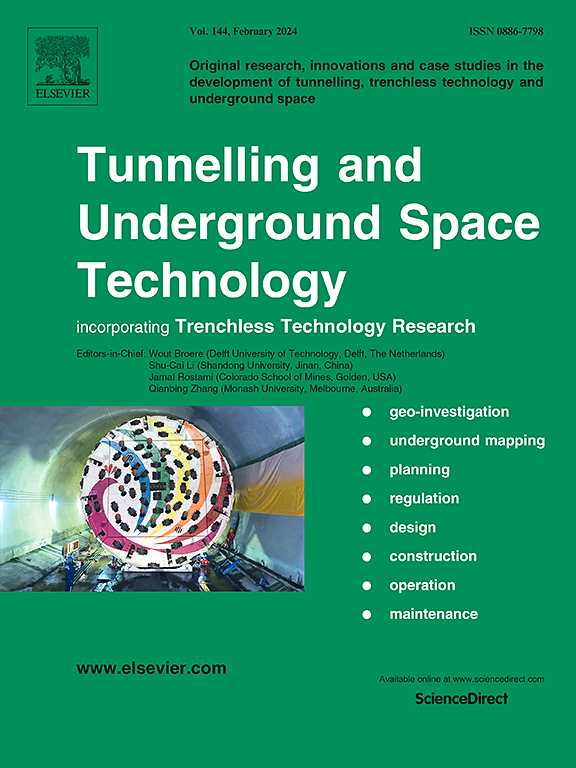Fine controlled blasting of subsurface excavation for subway stations in soft–hard mixed-medium rock mass
IF 6.7
1区 工程技术
Q1 CONSTRUCTION & BUILDING TECHNOLOGY
引用次数: 0
Abstract
Drilling and blasting excavation methods along with primary arch-cover primary supports are frequently employed in the construction of urban subway stations. However, traditional blasting methods fail to control tunnel face flatness, overbreak, and underbreak in soft–hard mixed-medium rock mass owing to symmetric and invariable blasting parameters. The Shishan Road Station of Qingdao Metro Line 6 is located in a soft–hard mixed-medium rock mass. Traditional blasting excavation methods result in considerable over-excavation of the soft rock on the one side, forming a concave inside, and minor over- and under-excavation of the hard rock on the opposite side, forming a convex outside. Herein, numerical models were developed to analyze the rock damage caused by contour blasting in soft–hard mixed-medium rock mass. Different perimeter hole spacings, burden thicknesses, and charge weights were investigated to identify the optimal parameters. Based on these models, this study proposes an asymmetric blasthole pattern and charge parameters, such as a smaller spacing and charge weight on the soft rock side and deeper hole lengths on the hard rock side. In addition, higher delay times were suggested to control the blasting vibration. Field tests showed that the optimized blasting scheme effectively controlled the flatness, overbreak, and underbreak. The utilization rate of blast holes increased by 5%, the average overbreak area decreased by 57.3%, and underbreak did not occur. The blasting energy of a single initiation and the proportion of low-frequency energy decreased significantly, resulting in better control of rock damage caused by blasting vibrations.
求助全文
约1分钟内获得全文
求助全文
来源期刊

Tunnelling and Underground Space Technology
工程技术-工程:土木
CiteScore
11.90
自引率
18.80%
发文量
454
审稿时长
10.8 months
期刊介绍:
Tunnelling and Underground Space Technology is an international journal which publishes authoritative articles encompassing the development of innovative uses of underground space and the results of high quality research into improved, more cost-effective techniques for the planning, geo-investigation, design, construction, operation and maintenance of underground and earth-sheltered structures. The journal provides an effective vehicle for the improved worldwide exchange of information on developments in underground technology - and the experience gained from its use - and is strongly committed to publishing papers on the interdisciplinary aspects of creating, planning, and regulating underground space.
 求助内容:
求助内容: 应助结果提醒方式:
应助结果提醒方式:


